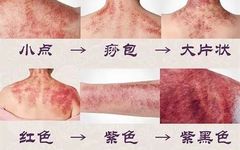Gua Sha
Gua Sha is one of the traditional natural therapies in China, based on the TCM theory of the skin. It involves scraping the skin with tools made from materials such as buffalo horn or jade at corresponding points to achieve the goals of unblocking meridians, invigorating blood circulation, and resolving blood stasis. Regular practice of Gua Sha can help adjust the flow of Qi, relieve fatigue, and enhance immune function.
01Common Gua Sha Techniques
Facial scraping: Suitable for relatively flat areas of the body;
Angle scraping: Often used on smaller areas of the body or in grooves, hollows, or depressions, with the Gua Sha tool held at a 45° angle to the skin;
Point pressing: The corner of the Gua Sha tool is held perpendicular to the treatment area at 90°, applying increasing pressure from light to heavy, suitable for areas without bones;
Patting method: Using the flat end of the Gua Sha tool or the palm of the hand with fingers together to pat the surface of the body at acupoints. Before patting, it is essential to apply Gua Sha oil to the area, commonly used on the limbs, especially at the elbow and knee pits;
Rubbing method: Using the corner of the Gua Sha tool, held at a 20° angle, to press on the treatment area while making gentle circular motions. This technique is often used on acupoints that have a strengthening effect on the organs, as well as on the back of the neck, lower back, and painful points in the reflex zones.
02Order and Direction of Gua Sha Order of Scraping
Order of Scraping
The general principle is to scrape from top to bottom, from front to back, and from near to far, starting with the face and abdomen, then moving to the head, shoulders, and lower back; scraping the upper limbs first, followed by the lower limbs.
 Direction of Scraping
Direction of Scraping
Generally, the direction is from top to bottom, from inside to outside, and from left to right. The head is scraped from top to bottom or horizontally from inside to outside; the shoulder blades are scraped from top to bottom or horizontally from front to back; the back and abdomen are scraped from top to bottom and from inside to outside; the upper and lower limbs are scraped from top to bottom; the face and chest are scraped diagonally from inside to outside.
03Reactions After Gua Sha
During Gua Sha treatment, due to individual constitution and condition, the surface of the skin may show red, dark red, purple, or bluish-black marks, with the marks appearing scattered, dense, or in patches.

During Gua Sha treatment, the treated area may feel noticeably warm. About half an hour after treatment, the surface marks gradually merge into patches, and deeper lumps slowly disappear, gradually spreading from deep to the surface. After about 12 hours, the skin surface may appear purplish or bluish-black. After 24 to 48 hours, the surface of the skin with marks may be painful to the touch. In severe cases, the local skin may feel slightly warm; individuals with weak constitutions may experience temporary fatigue, and in severe cases, a low fever may occur within 24 hours, but normalcy can be restored after a period of rest. The marks from Gua Sha generally fade within 5 to 7 days.
04Clinical Applications of Gua Sha
Gua Sha has effects such as unblocking meridians, invigorating blood circulation, clearing heat, promoting Yang Qi, expelling turbid substances, and detoxifying. Clinically, it can be used for various conditions in internal medicine, external medicine, gynecology, pediatrics, and otorhinolaryngology, as well as for strengthening the body, weight loss, and beauty.
05Post-Gua Sha Precautions
① Gua Sha treatment opens the sweat pores and expels pathogenic factors, which can deplete body fluids; therefore, drink a cup of warm water and rest for a moment after Gua Sha;
② After Gua Sha treatment, to avoid invasion by wind and cold, wait until the skin pores close and return to normal before bathing, generally about 3 hours.
Video reprinted from Bilibili user: Ai Gongfang
END
Consultation Tips



Author: Liu Lin
Reviewer: Tian Minghui

